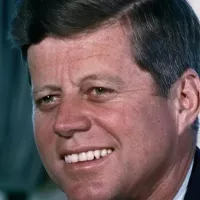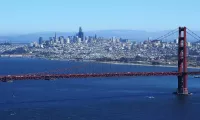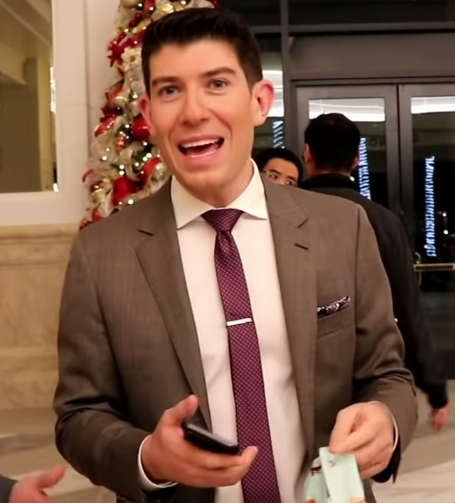Hawaiian Airlines is a major U.S. airline headquartered in Honolulu, and a subsidiary of Alaska Air Group. It is the primary carrier for flights to and from Hawaiʻi, and ranks as the tenth-largest U.S. airline in terms of passengers transported.
January 30, 1929: Inter-Island Airways Incorporated
On January 30, 1929, Inter-Island Airways, which is the forerunner of Hawaiian Airlines, was incorporated as a subsidiary of Inter-Island Steam Navigation Company.
October 6, 1929: Inter-Island Airways Begins Operations
On October 6, 1929, Inter-Island Airways commenced operations using a Bellanca CH-300 Pacemaker for short sightseeing flights over Oʻahu.
August 1941: Douglas DC-3s Added to Fleet
In August 1941, Hawaiian Airlines added the first Douglas DC-3s to its fleet, with some remaining in service until November 1968.
October 1, 1941: Name Change to Hawaiian Airlines
On October 1, 1941, the company officially changed its name to Hawaiian Airlines as it phased out the older Sikorsky S-38 and Sikorsky S-43 flying boats.
1952: Introduction of Convair 340
In 1952, Hawaiian Airlines introduced modern pressurized equipment with the Convair 340.
1959: Convair 440s added
From 1959 to 1960, Hawaiian Airlines added further Convair 440s to its fleet.
1960: Convair 440s added
From 1959 to 1960, Hawaiian Airlines added further Convair 440s to its fleet.
1964: Leina'ala Drummond wins Miss Hawaii
In 1964, Leina'ala Drummond won Miss Hawaii, later becoming a flight attendant and the face of Hawaiian Airlines' logo from 1973 onwards.
1965: Conversion of Convairs to Turbine Propeller Power Begins
From 1965 to 1967, Hawaiian Airlines converted most of its Convair aircraft to turbine propeller power.
1966: Hawaiian Airlines Offers Jet Service
In 1966, Hawaiian Airlines began offering jet service with the acquisition of Douglas DC-9-10 aircraft, significantly reducing travel times on most routes.
1967: Conversion of Convairs to Turbine Propeller Power Ends
From 1965 to 1967, Hawaiian Airlines converted most of its Convair aircraft to turbine propeller power.
November 1968: Final Retirement of Douglas DC-3s
In November 1968, Hawaiian Airlines saw the final retirement of some of its Douglas DC-3 aircraft, which had been in operation since August 1941.
1973: Logo Featured Leina'ala Drummond
From 1973 onwards, Hawaiian Airlines' logo featured the face of Miss Hawaii 1964, Leina'ala Drummond, who had been a flight attendant with the airline.
1974: Last Convairs Sold
In 1974, Hawaiian Airlines sold the last of its Convair aircraft.
1976: Hawaiian Air Cargo Division Established
From 1976 to 1977, Hawaiian Airlines established Hawaiian Air Cargo based in Macon, Georgia, focusing on the United States Air Force Logair domestic cargo program, using Lockheed L-188 Electra freighter aircraft. The airline won an Air Force contract for 1976–1977.
1977: Loss of Aircraft Lease and Contract Bid
From 1976 to 1977, Hawaiian Airlines established Hawaiian Air Cargo based in Macon, Georgia, focusing on the United States Air Force Logair domestic cargo program, using Lockheed L-188 Electra freighter aircraft. In 1977, Hawaiian Air Cargo lost the lease of the aircraft and was unable to bid for 1977–1978.
1978: Hawaiian Air Cargo Re-established
From 1978 to 1980, Hawaiian Airlines tried once more with a new batch of aircraft and operated the Hawaiian Air Cargo division again.
1980: Hawaiian Air Cargo Sold to Zantop International Airlines
In 1980, Hawaiian Airlines sold the Hawaiian Air Cargo operation to Zantop International Airlines.
1985: Expansion Begins with Charter Services
In 1985, Hawaiian Airlines began expanding outside the inter-island market through charter services to the South Pacific and throughout the rest of the Pacific using Douglas DC-8 aircraft.
1985: Leased Lockheed L-1011 TriStars Received and Honolulu-Los Angeles Services Launched
In early 1985, Hawaiian Airlines received the first two of its leased Lockheed L-1011 TriStars and launched its first scheduled operation out of Hawaiʻi: daily Honolulu-Los Angeles services.
1986: Entry into International Markets
In 1986, Hawaiian Airlines entered the new international markets of Australia and New Zealand with one-stop services through Pago Pago International Airport.
1986: Expansion to West Coast Gateway Cities
Throughout 1985 and 1986, Hawaiian Airlines added additional L-1011s to its fleet and used them to open up services to other West Coast gateway cities.
1987: Kapalua Airport Opens
In 1987, Kapalua Airport on the west side of Maui opened. Hawaiian Airlines was the only inter-island carrier capable of serving the airport due to its de Havilland Canada DHC-7 Dash 7 turboprops.
September 1993: Filing for Chapter 11 Bankruptcy Protection
In September 1993, Hawaiian Airlines filed for Chapter 11 bankruptcy protection due to financial difficulties and mounting losses.
1993: Sale of Kapalua Airport to the State of Hawaii
In 1993, Hawaiian Airlines sold Kapalua Airport to the State of Hawaii as part of its restructuring efforts.
September 1994: Exit from Bankruptcy and Retirement of Dash 7 Fleet
In September 1994, Hawaiian Airlines exited bankruptcy protection and retired its Dash 7 fleet, operating a more streamlined all-jet fleet.
March 2001: Boeing 717 aircraft operation
In March 2001, Hawaiian Airlines began operating 13 Boeing 717 aircraft on its inter-island network.
October 2002: Service to Phoenix Sky Harbor Airport Begins
In October 2002, Hawaiian Airlines began service to Phoenix Sky Harbor airport using its Boeing 767–300 aircraft.
2002: DC-10s Being Retired
Between 2002 and 2003, Hawaiian Airlines retired its DC-10s.
March 2003: Second Chapter 11 Bankruptcy Filing
In March 2003, Hawaiian Airlines filed for Chapter 11 bankruptcy protection for the second time in its history.
2003: DC-10s Being Retired
Between 2002 and 2003, Hawaiian Airlines retired its DC-10s.
2004: RC Aviation Buys Majority Share
In 2004, RC Aviation, a unit of Ranch Capital, bought a majority share in parent company Hawaiian Holdings Inc.
May 2005: Court Approval for Reorganization Plan
As of May 2005, Hawaiian Airlines had received court approval for its reorganization plan.
June 2, 2005: Emergence from Bankruptcy Protection
On June 2, 2005, Hawaiian Airlines emerged from bankruptcy protection with reduced operating costs and restructured aircraft leases.
June 2005: Hawaiian Airlines Emerges from Bankruptcy Protection
In June 2005, Hawaiian Airlines emerged from bankruptcy protection.
September 28, 2005: Nonstop Flights to San Jose Begin
On September 28, 2005, Hawaiian Airlines began nonstop daily flights from Honolulu to San Jose, California.
March 2007: Introduction of "tasting menu"
In March 2007, Hawaiian Airlines introduced a "tasting menu" or "tapas menu" for its first-class passengers on its U.S. mainland and international flights. The menu consists of twenty entrees set on a rotation, with five available on any given flight.
July 24, 2007: Contract with Air New Zealand Signed
On July 24, 2007, Hawaiian Airlines and Air New Zealand signed a $45 million contract for Air New Zealand to perform heavy maintenance on Hawaiian's Boeing 767 aircraft for five years.
August 2007: Seattle Seahawks Begin Using Hawaiian Airlines
In August 2007, the Seattle Seahawks began using Hawaiian Airlines to travel to games, joining the Las Vegas Raiders, who had been flying Hawaiian Airlines since the 1990s. The teams now travel on Hawaiian's Airbus A330s and Boeings 767s.
November 27, 2007: Order for Airbus aircraft
On November 27, 2007, Hawaiian Airlines ordered 24 long-range aircraft from Airbus valued at $4.4 billion. The order included six Airbus A330-200s with six options, and six A350-800s with six options.
March 2008: Launch of Nonstop Flights to Manila
In March 2008, Hawaiian Airlines launched nonstop flights to Manila, Philippines, in its first major international expansion since emerging from bankruptcy protection in June 2005.
May 1, 2008: Flights to Oakland Begin
On May 1, 2008, Hawaiian Airlines began flights to Oakland in response to the closure of ATA Airlines and Aloha Airlines.
June 2, 2008: Hawaiian Holdings, Inc. Listed on NASDAQ
On June 2, 2008, Hawaiian Holdings, Inc., was listed on NASDAQ.
June 4, 2008: Lease of additional Boeing 717 aircraft
On June 4, 2008, Hawaiian Airlines announced plans to lease four additional Boeing 717 aircraft to meet increased demand following the shutdown of Aloha Airlines' passenger operations and the closure of ATA Airlines. The deliveries were scheduled between September and the end of 2008.
June 30, 2008: Hawaiian Holdings Added to Russell 3000 Index
On June 30, 2008, Hawaiian Holdings, Inc. announced that it had been added to the Russell 3000 Index.
October 2008: Lease of additional A330-200s
In October 2008, Hawaiian Airlines announced it would lease two additional A330-200s beginning in 2011, while extending the leases of two Boeing 767-300ERs to bridge the transition.
2009: Introduction of premium meals
In 2009, Hawaiian Airlines introduced premium meals in its main cabin, giving passengers the option of having the complimentary meal or paying to upgrade to a premium meal. The premium meals consisted of a variety of high-end Asian cuisines but were later discontinued.
February 16, 2010: Approval Sought for Nonstop Flights to Tokyo-Haneda
On February 16, 2010, Hawaiian Airlines sought approval from the United States Department of Transportation to begin nonstop flights from Honolulu to Tokyo-Haneda.
November 18, 2010: Nonstop Service to Haneda, Japan Begins
On November 18, 2010, Hawaiian Airlines began nonstop service to Haneda, Japan, after receiving approval from the USDOT.
December 2010: Additional A330-200s
In December 2010, Hawaiian Airlines ordered six A330-200s, bringing the total to 15.
2010: A330 deliveries began
In 2010, deliveries of the Airbus A330-200 aircraft to Hawaiian Airlines began.
January 12, 2011: Nonstop Service to Seoul-Incheon Begins
On January 12, 2011, Hawaiian Airlines began nonstop service to Seoul-Incheon, South Korea.
March 31, 2011: Renovation of Inter-Island Terminal Check-In Lobby Announced
On March 31, 2011, Hawaiian Airlines announced the renovation of the check-in lobby of the inter-island terminal at Honolulu International Airport, its main hub.
July 12, 2011: Osaka, Japan Added to Network
On July 12, 2011, Hawaiian Airlines added Osaka, Japan to its network.
November 17, 2011: Order of Additional Airbus A330-200 Aircraft
On November 17, 2011, Hawaiian Airlines ordered five additional Airbus A330-200 aircraft.
2011: A330-200s Leased
Beginning in 2011, Hawaiian Airlines leased two additional A330-200s.
June 4, 2012: Expansion to the East Coast with Flights to New York
On June 4, 2012, Hawaiian Airlines expanded to the east coast with daily flights to New York's John F. Kennedy International Airport.
August 2012: Upgrade to economy class service
In August 2012, Hawaiian Airlines announced an upgrade to its economy class in-flight U.S. mainland service, including a new menu, a complimentary glass of wine on lunch or dinner flights, and a free tropical cocktail before landing on breakfast flights.
August 30, 2012: Application Filed for Nonstop Route Between Kona and Tokyo-Haneda
On August 30, 2012, Hawaiian Airlines filed an application with the U.S. Department of Transportation for a nonstop route between Kona and Tokyo-Haneda.
December 3, 2012: Flights to Taipei, Taiwan Announced
On December 3, 2012, Hawaiian Airlines unveiled plans to begin flights to Taipei, Taiwan, beginning July 9, 2013.
January 2013: Order of A321neo aircraft
In January 2013, Hawaiian Airlines ordered 16 A321neo aircraft, with options for up to nine more. The type is operated in a two-class, 189-seat configuration.
February 11, 2013: "'Ohana by Hawaiian" New Venture Announced
On February 11, 2013, Hawaiian Airlines announced a new venture in the turboprop inter-island business, "’Ohana by Hawaiian”.
March 2013: Finalization of A321neo order
In March 2013, after reaching labor agreements with its pilot and flight attendant unions, Hawaiian Airlines finalized the order of 16 A321neo aircraft.
April 10, 2013: First Destination in China Announced and Manila Service Ending
On April 10, 2013, Hawaiian Airlines announced its first destination in China, with service to Beijing expected to start on April 16, 2014, pending government approval, and announced that it would end service to Manila, Philippines on July 31, 2013.
July 9, 2013: Flights to Taipei, Taiwan Begin
On July 9, 2013, Hawaiian Airlines began flights to Taipei, Taiwan.
July 11, 2013: Codeshare Agreement with China Airlines Signed
On July 11, 2013, Hawaiian Airlines signed a codeshare agreement with China Airlines.
July 31, 2013: End of Service to Manila
On July 31, 2013, Hawaiian Airlines ended service to Manila, Philippines.
March 11, 2014: "'Ohana by Hawaiian" Service Begins
On March 11, 2014, "’Ohana by Hawaiian” service began to Molokaʻi and Lānaʻi.
March 12, 2014: Hawaiian Airlines Announces New Daily Service
On March 12, 2014, Hawaiian Airlines announced new daily service between Kahului and Los Angeles beginning May 2, 2014. They also added a second flight from June 30 to September 8 due to passenger demand and nonstop summer service between Los Angeles and Līhuʻe, Kauaʻi, and Kona, Hawaiʻi.
April 16, 2014: Beijing Service
On April 16, 2014, Hawaiian Airlines began service to Beijing, China, pending government approval.
August 14, 2014: Hawaiian Airlines Announces Direct Service Between Kahului and San Francisco
On August 14, 2014, Hawaiian Airlines announced the start of direct service between Kahului and San Francisco, set to begin in November.
January 5, 2015: Hawaiian Re-files Application for Kona-Haneda Route
On January 5, 2015, Hawaiian Airlines re-filed its previously rejected application with the U.S. Department of Transportation (DOT) for the Kona-Haneda route with service planned to begin in June if approved. This request followed a DOT decision in December 2014 to review Delta Air Lines' Seattle-Tokyo route due to reduced flight frequency.
2015: A330-200 fleet growth
By 2015, the Airbus A330-200 fleet of Hawaiian Airlines had grown to 22 aircraft.
December 2016: Lease of additional A321neos
In December 2016, Hawaiian Airlines announced it would lease two additional A321neo aircraft, bringing the total to 18.
2016: Additional purchases and leases
Throughout 2016, Hawaiian Airlines announced additional purchases and leases of aircraft.
May 1, 2017: Hawaiian Airlines Reveals New Logo and Livery
On May 1, 2017, Hawaiian Airlines revealed a new logo and livery design for its aircraft.
December 1, 2017: Introduction of Pau Hāna Café brand
Starting December 1, 2017, guests in the main cabin on Hawaiian Airlines flights between Hawaiʻi and western U.S. gateway cities began receiving complimentary meal service exclusively created for the airline's new Pau Hāna Café brand. The Pau Hāna Café offers a continental breakfast box for brunch and a hot sandwich and side for lunch.
December 20, 2017: Partnership with Mana Up
On December 20, 2017, Hawaiian Airlines announced a partnership with Mana Up, the Hawaiian-based accelerator for local consumer packaged goods, to increase the diversity and volume of locally made products served on board.
2017: First A350 Scheduled
In 2017, the first A350 was originally scheduled for delivery to Hawaiian Airlines.
January 17, 2018: A321neo enters service
On January 17, 2018, the Airbus A321neo entered service with Hawaiian Airlines, with a flight from Kahului to Oakland, California.
February 2018: Reports of A330-800 order cancellation
In February 2018, reports indicated that Hawaiian Airlines would cancel its A330-800 order in favor of the Boeing 787-9 Dreamliner.
March 6, 2018: Hawaiian Airlines Orders Boeing 787-9 Dreamliners
On March 6, 2018, Hawaiian Airlines announced an order for 10 Boeing 787–9 Dreamliner aircraft, with options for 10 more, selecting GE GEnx engines.
July 2018: Order finalized at Farnborough Air Show
In July 2018, Hawaiian Airlines finalized its order for ten Boeing 787-9s with options for ten more at the Farnborough Air Show.
August 2020: Travel Quarantines Reinstated, Contributing to Downsizing Plans
In August 2020, fourteen-day travel quarantines were reinstated, contributing to Hawaiian Airlines' plans to downsize the company by 15–25% by summer 2021.
2020: Hawaiian Airlines Reports Net Loss Due to COVID-19 Pandemic
In 2020, Hawaiian Airlines reported a net loss of over $100 million for the second quarter due to the economic effects of the COVID-19 pandemic.
May 27, 2021: Hawaiian Airlines to Discontinue 'Ohana by Hawaiian Brand
On May 27, 2021, Hawaiian Airlines announced that it would discontinue the 'Ohana by Hawaiian brand and its cargo and passenger services. This decision came after the pandemic and resulting quarantine significantly impacted inter-island travel, making the operation no longer feasible. The carrier's ATR fleet would be moved to the mainland and prepared for sale.
2021: Downsizing Plans
By summer 2021, Hawaiian Airlines was planning to downsize the company by 15–25% due to the economic effects of the COVID-19 pandemic and travel quarantines.
April 2022: Agreement to use Starlink network
In April 2022, Hawaiian Airlines signed an agreement to use the Starlink network that allowed the company to offer in-flight wi-fi for the first time.
April 25, 2022: Hawaiian Airlines to Offer SpaceX Starlink Service
On April 25, 2022, Hawaiian Airlines announced they would become the first major air carrier to offer the SpaceX Starlink service on all transpacific flights, with the service being offered free to passengers beginning in 2023.
January 4, 2023: Hawaiian Airlines Orders Additional Boeing 787-9 Aircraft
On January 4, 2023, it was announced that Hawaiian Airlines ordered an additional two 787-9 aircraft, converted from existing options.
May 15, 2023: Hawaiian Airlines Introduces New "Leihōkū Suites"
On May 15, 2023, Hawaiian Airlines introduced the new "Leihōkū Suites" on their Boeing 787–9 Dreamliner aircraft. These suites offer lie-flat seating, an 18-inch in-flight entertainment screen, personal outlets, wireless charging, and direct aisle access. The design elements evoke Hawaiʻi's natural world.
November 2023: Original Delivery Schedule for 787-9
Deliveries of Boeing 787-9 aircraft to Hawaiian Airlines had originally been scheduled to begin in November 2023.
December 3, 2023: Alaska Air Group Announces Purchase of Hawaiian Airlines
On December 3, 2023, Alaska Air Group announced its plans to purchase Hawaiian Airlines, marking a significant development in the airline industry.
December 2023: Alaska Airlines Announces Merger with Hawaiian Airlines
In December 2023, Alaska Airlines announced its intent to merge with Hawaiian Airlines by purchasing it for $1.9 billion in cash, assuming approximately $900 million in outstanding debt.
2023: SpaceX Starlink Service Offered Free to Passengers
In 2023, SpaceX Starlink service was to be offered for free to passengers.
January 2024: First Boeing 787-9 Delivered
In January 2024, after multiple delays, the first Boeing 787-9 was delivered to Hawaiian Airlines and entered service on West Coast routes.
February 2024: Free in-flight Wi-Fi with Starlink
In February 2024, Hawaiian Airlines announced it would offer free in-flight Wi-Fi provided by SpaceX's Starlink, making it the first major US airline to offer the satellite-based service.
February 2024: Mayors Declare Support for Merger
In February 2024, Richard Bissen (mayor of Maui County), Rick Blangiardi (mayor of the City and County of Honolulu), Derek Kawakami (mayor of Kauai County), and Mitch Roth (mayor of Hawaiʻi County) published an open letter in the Honolulu Star-Advertiser declaring their support for the merger as "good for Hawaiʻi" and enhance service to neighbor islands.
April 2024: Shareholders Approve Proposed Merger
In April 2024, the proposed merger between Alaska Air Group and Hawaiian Holdings, Inc. was approved by shareholders of Hawaiian Airlines.
August 19, 2024: U.S. Department of Justice Completes Antitrust Review, Declines to Block Merger
On August 19, 2024, the U.S. Department of Justice completed its regulatory antitrust review of the proposed acquisition of Hawaiian Airlines by Alaska Air Group and declined to attempt to block the merger in court.
September 2024: Starlink Installed on Airbus Fleet
In September 2024, Hawaiian Airlines announced it had installed Starlink on its Airbus fleet.
September 17, 2024: U.S. Department of Transportation Approves Merger with Conditions
On September 17, 2024, the regulator from the U.S. Department of Transportation approved the merger, with conditions including the one-to-one exchange rate for airline points, maintenance of "robust levels" of inter-island passenger and cargo flights, continued service to rural Hawaiian communities, the permission for children under the age of thirteen to sit next to accompanying adults regardless of their tickets, as well as lowered costs for military members and their families.
September 18, 2024: Acquisition of Hawaiian Airlines by Alaska Air Group Completed
On September 18, 2024, the acquisition of Hawaiian Airlines by Alaska Air Group was completed, following regulatory approval.
July 2025: Aircraft in Operation
As of July 2025, Hawaiian Airlines operates the following aircraft.
August 2025: HawaiianMiles and Alaska's MilagePlan to be Replaced
In August 2025, it was announced that HawaiianMiles and Alaska's MilagePlan would be replaced by a new frequent-flyer program called Atmos Rewards.
2025: Joe Sprague Announces Retirement, Diana Birkett Rakow Appointed CEO
In 2025, chief executive officer Joe Sprague announced his retirement. Beginning in October of the same year, Diana Birkett Rakow succeeded Sprague as CEO of the company.
Mentioned in this timeline

John F Kennedy JFK was the th U S President...
The United States of America is a federal republic located...
California is a U S state on the Pacific Coast...
New Zealand is an island country located in the southwestern...

San Francisco is a major commercial financial and cultural hub...
China officially the People's Republic of China PRC is an...
Trending

2 months ago Luis Suárez shines as Sporting faces Napoli amid fan clashes in Champions League.

9 months ago Aniston and Pascal spark dating rumors after dinner, while Theroux reportedly weds.
6 months ago Dodgers Defeat Padres: Smith's Walk-Off Homer Secures Victory in Historic Game

Jeff Passan is a prominent American baseball sportswriter and author He is known for his in-depth reporting analysis and commentary...

2 months ago Kyle Tucker Player Props and Chicago Cubs' Distrust in Wild Card Series

4 days ago Edwin Diaz Free Agency: Mets, Dodgers in Potential Bidding War After Williams Signing?
Popular
Matt and Ross Duffer known as the Duffer Brothers are...

Candace Owens is an American conservative political commentator and author...

Ilhan Omar is an American politician currently serving as the...

XXXTentacion born Jahseh Dwayne Ricardo Onfroy was a controversial yet...

Tom Cotton is an American politician and Army veteran currently...
Aftyn Alyssa Behn is an American politician currently serving as...